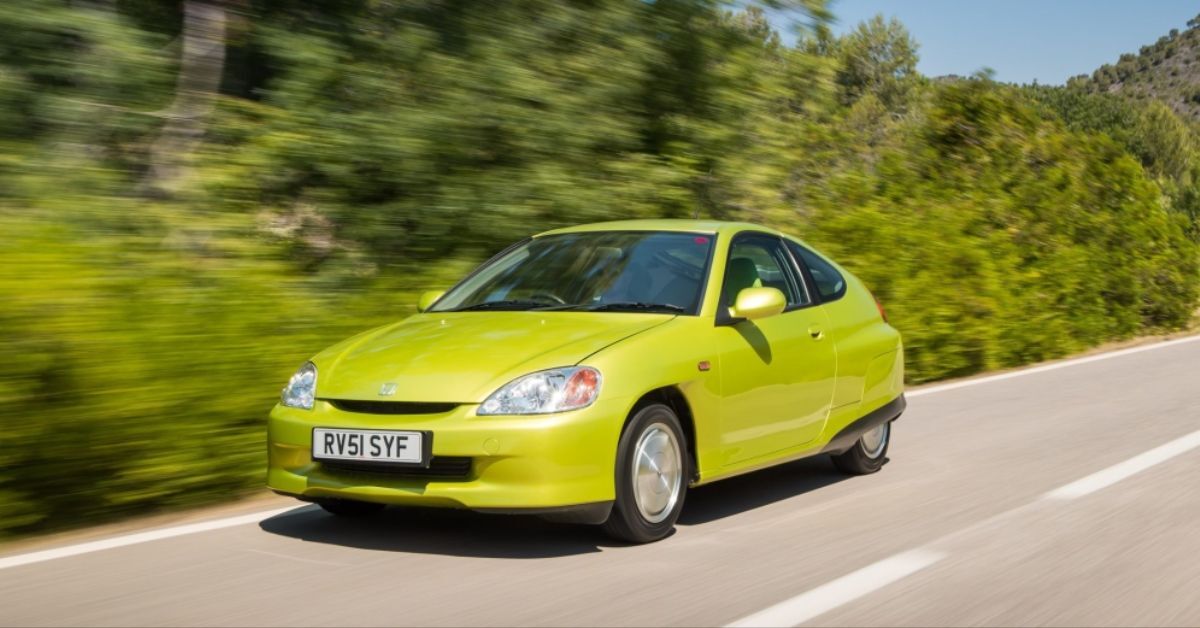I learned about this today so now you all do too
The Honda Insight is a car all the way back as far as 1999. This crazy vehicle was able to achieve an EPA MPG (with modern tests) of 49 city and 61 highway. Original testing was actually 67 city and 71 highway, at that! This crazy little engine has a maximum of 78 horsepower, combined between the Inline 3 SOHC Honda engine and a 10KW (13HP) electric motor. This motor is used as the starter, the alternator, and a motor together, but it actually has a separate starter motor in case the hybrid motor dies, using a separate 12v starter battery as well.
While 78 horsepower doesn’t sound very great, keep in mind the following: the coefficient of drag is 0.25, and if weighs a maximum(!) of 1,964 lbs, or 891 kg. What does this mean? It can still reach a maximum speed of up to 112mph! Not to mention, modders that get ahold of these things can push it far beyond these limits, with someone putting in a Honda J32A2 engine and getting 295HP in this little thing! That would put it at approximately capable of a top speed of about 192mph!
Not to mention, not only is this thing super light and nimble, it still has respectable crash ratings, and while parts for it may be hard to find, this car is one of the coolest and most efficient one can buy, even today
Edit: Found a link I like even better for the main link, original link here



I am personally not a fan of EVs, as the lack of the sound, rumble, and smell of an engine is missing from the driving experience for me. But I think GM had some good ideas with the EV1.
While I think more advanced technology may have had some improvement on the EV1, I am more inclined to think it would have performed better as a hydrogen powered vehicle. Hydrogen power is cleaner than gasoline, but still has the refuelling speed benefit that gasoline has. Charging a car battery for any amount of time longer than 5 minutes is a major inconvenience.
I really think that ideas conceived by the Tucker motor company could still be utilized. Seat belts and disk brakes have already become standard, why not take this further? Designing a vehicle for the engine to be swapped out in ~30 minutes presents a design precedent that needs major consideration: ease and speed of maintenance. You want to do major repairs on your EV? Have fun getting tens or hundreds of thousands of dollars worth of insulated safety equipment, insulated tools, and heavy lifting equipment. Designing vehicles to have fast, easy, and relatively safe maintenance for even major repairs would be well worth the tradeoff of making a vehicle bigger or less fuel efficient, in my opinion.
Hydrogen cars aren’t as green in practice, at least for consumer vehicles.